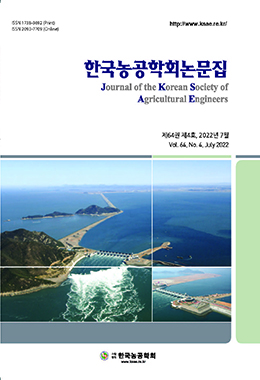In this study, we estimated the monthly FDSI (Flash Drought Stress Index) for assessing flash drought on South Korea using AMSR2(Advanced Microwave Scanning Radiometer 2) satellite-based soil moisture footprints. We collected the AMSR2 soil moisture and climate-land surface data from April to November 2018 for analyzing the monthly FDSI values. We confirmed that the FDSI values were high at the regions with the high temperature/evapotranspiration while the precipitation is relatively low. Especially, the regions which satisfied an onset of flash drought (FDSI≧0.71) were increased from June. Then, the most of regions suffered by flash drought during the periods (July to August) with the high temperature and evapotranspiration. Additionally, the impacts of landuse and slope degree were evaluated on the monthly FDSI changes. The forest regions that have the steep slope degree showed the relatively higher FDSI values than the others. Thus, our results indicated that the the slope degree has the relatively higher impact on the onset and increasing of flash drought compared to the others.




